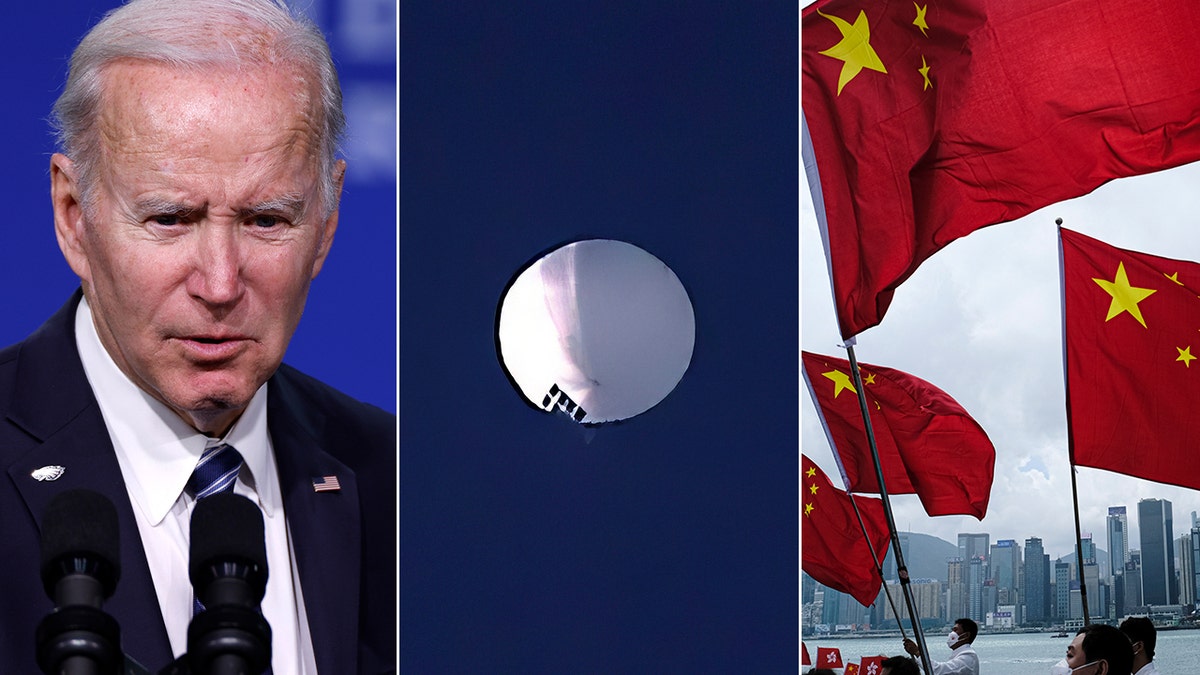China surveillance spy craft was a ‘major breach’: Sen. Roger Wicker
Sen. Roger Wicker, R-Miss., discusses the latest developments in the Chinese surveillance spy craft on ‘America’s Newsroom.’
We are now learning the Chinese surveillance balloon – which traversed the United States uncontested in February – collected signals intelligence floating above American military installations. In this, the most dangerous period since World War II, the Biden administration should have been more forthcoming about the threat China’s incursion posed to our homeland.
Transparency builds trust, especially during a geopolitical crisis. But during a critical moment with Beijing, President Biden and his national security team chose to mislead the public about the steps they took to counter an adversarial asset over our homeland.
I have pressed the Biden administration to provide the facts essential to understanding of this challenge: What was the Pentagon’s initial threat assessment of the first balloon, and when was it conducted? When was the secretary of Defense informed? What about the president?
Press reports have been more reliable in answering these questions than the Biden administration's own tight-lipped accounting.
What we do know should give us pause. I asked Gen. Glen VanHerck, the NORAD chief, about these questions in a public hearing in March. He testified that he still does not know when the president was made aware of the balloon and that he was not allowed to provide response options to the White House until five days after he first spotted it. When I asked Secretary Lloyd Austin, he also gave an unsatisfactory response, repeating many of the same interagency talking points. This is hardly the hallmark of a dedicated effort from the Pentagon to be forthcoming with Congress.
The best understanding we have of this timeline has come in spite of the Biden administration's best efforts to deflect my questions. This is partisanship at the expense of homeland defense.
We also need to know what capabilities our air defense professionals lacked while monitoring and scrambling aircraft to the object. For years, NORAD and others have asked Congress for more and modernized early warning technology to prepare for events such as those in February. Congress needs to seize this moment and add significant funding for Over-the-Horizon Radars, as well as innovative programs like Pathfinder, Northstar, and the Navy’s integrated Undersea Surveillance System to fortify the integrity of the continent.
Equally worthy of congressional scrutiny is the troubling fact that a four-star general charged with the defense of North American airspace did not feel he had the authority to make a command decision on this matter in real time. This failure demands a holistic assessment of whether the procedures we have had in place for more than 70 years are adequate to the world today.
The administration’s failure of imagination in homeland defense planning also coincides with revelations about monumental breakthroughs in Chinese and Russian sophisticated missile technology and nuclear forces. We need to know whether these capabilities could allow our adversaries to hold the entire continent hostage to volleys of long-range weapons against which we have few defense and deterrence options. Gen. VanHerck told me he does not have the full set of tools he needs to defend our homeland.
President Biden missed a chance to explain clearly the Chinese military threat to the American people. Popular opinion on China continues to plummet, but many still struggle to understand to how Beijing’s military modernization threatens the American way of life. It is hard to imagine a more concrete way for the president to make that case than a Chinese military balloon – potentially armed with self-destructing explosives – floating above American backyards.
CLICK HERE TO GET THE OPINION NEWSLETTER

The White House said on Friday President Joe Biden would not shoot down the suspected Chinese spy balloon, despite calls from lawmakers and others. (Anna Moneymaker/Getty Images/Larry Mayer/The Billings Gazette via AP/Keith Tsuji/Getty Images)
Incursions like China’s have galvanized the public before. In the Second World War, Japan landed a fleet of nearly 1,000 incendiary balloons above the West Coast. In the early years of the Cold War, Soviet MiGs frequently harassed Navy warplanes, including holding an American aircrew hostage and later downing a jet over the Aleutians. This series of standoffs proved pivotal in cementing an enduring consensus for strengthening our national defense.
CLICK HERE TO GET THE FOX NEWS APP
If the president cannot uphold his duties, Congress must step in. I intend to lead a sustained inquiry into the outstanding questions from this debacle. I will also provide several amendments in this year’s NDAA to improve our homeland and missile defense protocols and capabilities.
There is a roadmap to strengthen our nation’s shield against threats. At a height of tensions with the Soviet Union 40 years ago, President Ronald Reagan unveiled the famous Strategic Defense Initiative. In a primetime address, he charged Americans to apply "all our abilities and our ingenuity to achieving a truly lasting stability." It worked. Whether the threat is Chinese balloons, Russian bombers, or hypersonic missiles, American ability and ingenuity remains our best defense.


